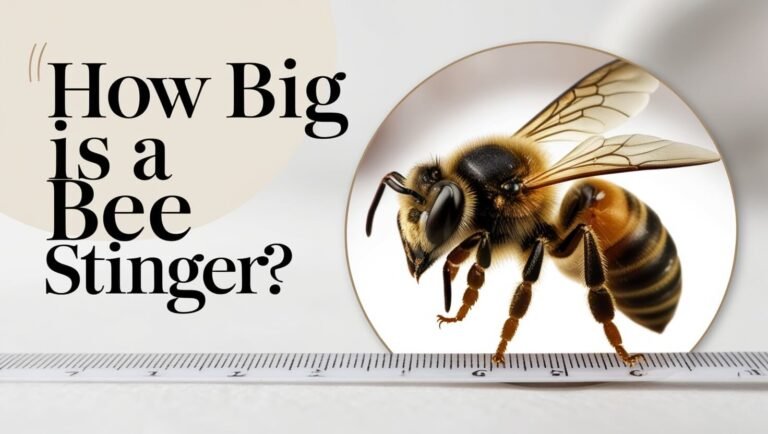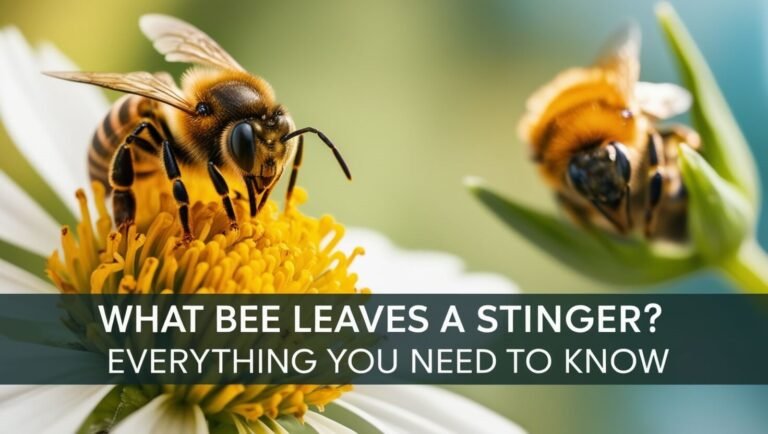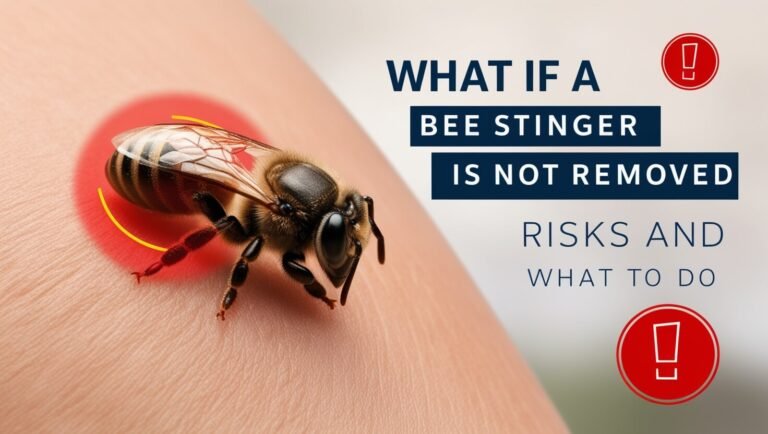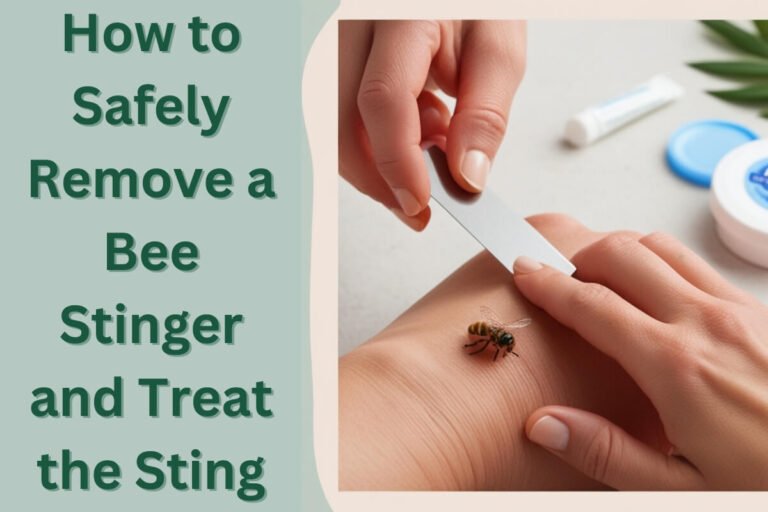How Do You Know If a Bee Stinger Is Still in You?
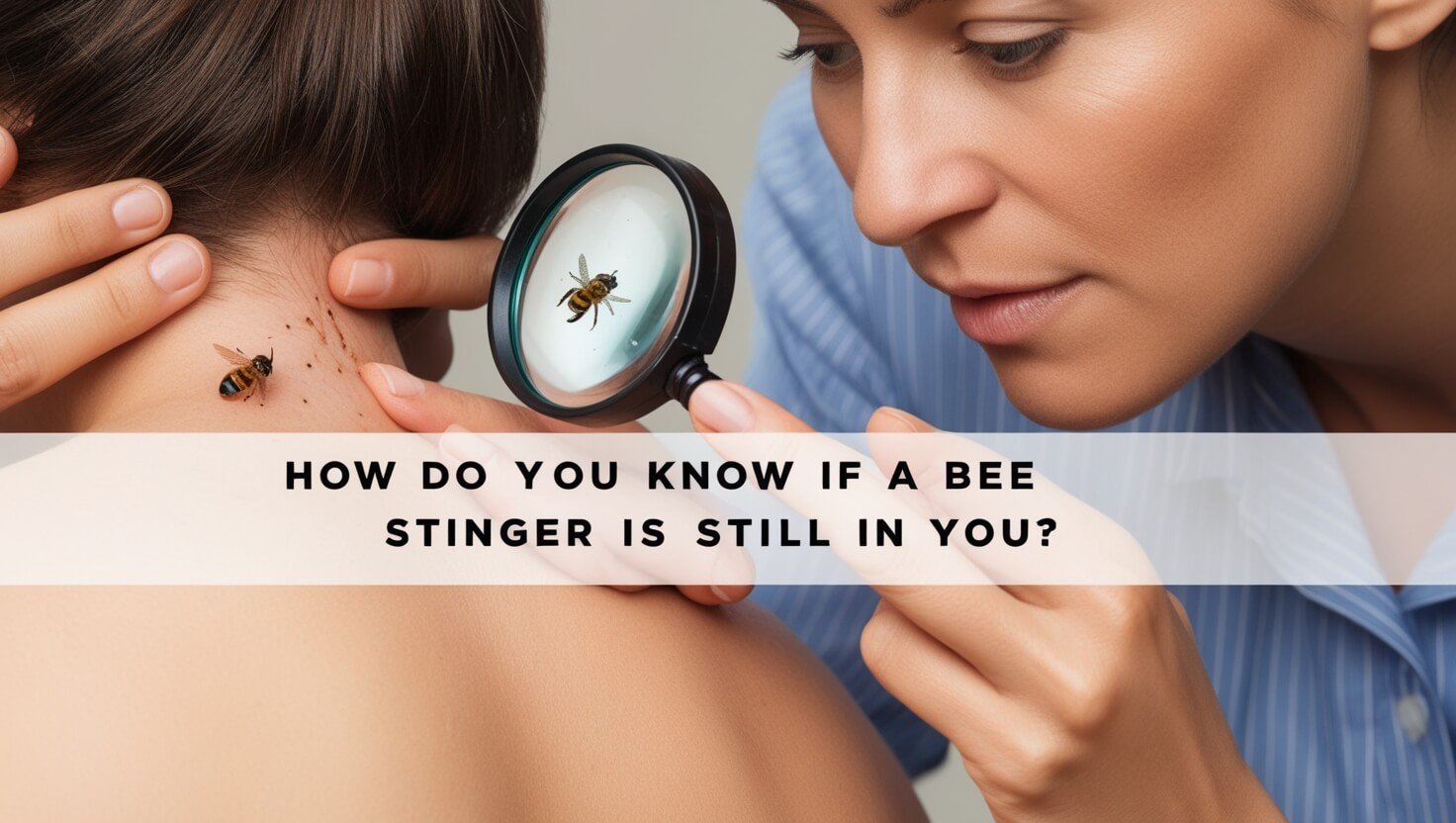
Identifying a Bee Stinger in Your Skin
Visible Signs of a Bee Stinger
If you’ve been stung by a bee, you’ll likely see a small, dark strand or dot in the center of the red, swollen area on your skin. This is the bee’s stinger that has been left behind. The stinger may also have a bulbous tip at the top, which is the venom sac.
Feeling for the Stinger
In some cases, the stinger may not be easily visible on the skin’s surface. If you can’t see it, try gently feeling around the sting site. You may be able to detect a small, sharp object embedded in your skin.
Removing the Stinger
It’s important to remove the stinger as quickly and completely as possible to stop the continued release of venom into your body. You can use a variety of tools to remove the stinger, including tweezers, your fingernails, a piece of gauze, a credit card, or a blunt butter knife. Gently scrape or pull the stinger out, being careful not to squeeze it, as that can cause more venom to be injected.
Dangers of a Remaining Bee Stinger
Continued Venom Injection
The longer a bee stinger remains in your skin, the more venom it will continue to release into your body, leading to increased pain, swelling, and other adverse reactions.
Risk of Infection
If a portion of the stinger is left behind in your skin, it can increase the risk of the sting site becoming infected. This can cause the area to become red, swollen, and painful, potentially requiring medical treatment.
Seeking Medical Attention
When to See a Doctor
In most cases, you can treat a bee sting at home with simple first aid measures. However, it’s important to seek medical attention if the swelling spreads beyond the sting site, especially if it affects your face or neck. This could be a sign of a severe allergic reaction that requires immediate treatment.
Treating Severe Reactions
If you experience symptoms like difficulty breathing, dizziness, or a rapid heartbeat after a bee sting, these could be signs of anaphylaxis – a life-threatening allergic reaction. Call 911 or go to the emergency room right away, as this condition requires prompt medical intervention with epinephrine and other treatments.
Preventing Future Bee Stings
Avoiding Attracting Bees
To reduce your risk of getting stung by a bee in the future, it’s important to avoid behaviors and situations that can attract these insects. This includes wearing floral-scented products, eating or drinking sweet foods and beverages outdoors, and disturbing bee nests or hives.
Protective Clothing and Measures
Wearing long sleeves, pants, and closed-toe shoes when spending time outdoors can help prevent bee stings. You should also be cautious around flowering plants and carefully inspect your surroundings before sitting or walking in grassy areas.
Frequently Asked Questions
How Long Can a Bee Stinger Stay in Your Skin?
A bee stinger can remain in your skin for several hours or even days, depending on how deeply it penetrated and whether it was fully removed. In some cases, the stinger may work its way out on its own over time as your skin sheds.
Can a Bee Stinger Work Its Way Out on Its Own?
Yes, if the entire stinger was not removed, the remaining portion can sometimes work its way out of your skin as your body naturally sheds layers of skin. However, it’s best to try to remove the stinger as soon as possible to stop the continued injection of venom.
What Happens If You Don’t Remove a Bee Stinger?
If a bee stinger is left in your skin, the venom will continue to be released into your body, leading to increased pain, swelling, and the risk of infection. This can also increase the severity of your body’s reaction to the sting. It’s important to remove the stinger as soon as possible to minimize these risks.
In Conclusion: Importance of Identifying and Removing a Bee Stinger
Getting stung by a bee can be a painful and unpleasant experience, but knowing how to identify and properly remove the stinger can help minimize the discomfort and potential complications. By being vigilant about checking for a stinger, removing it safely, and seeking medical care when necessary, you can better manage the effects of a bee sting and reduce the risk of lasting consequences. Remember, prompt action is key when dealing with a bee sting, so be prepared and stay safe!

